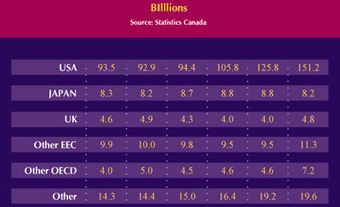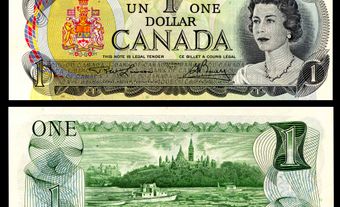Microeconomics is a field of economics that studies the behaviour of individuals and business firms in allocating scarce resources. In contrast, macroeconomics studies the economy as a whole and looks at issues such as employment, inflation, government deficits and international trade. Like all fields of economics, microeconomic research consists of forming theories and testing those theories using economic data.
Microeconomics has a long history that dates back to the very beginning of economics as a discipline. Much of microeconomic theory is premised on the notion of individuals as rational actors aiming to maximize their utility, or their satisfaction with goods and services. More recently, research in behavioural economics has combined insights from economics and psychology to challenge these assumptions.
Development and Schools of Thought
Microeconomics emerged from the works of utilitarian philosophers such as Jeremy Bentham, as well as from early classical economists such as David Ricardo, Thomas Malthus, Adam Smith, Karl Marx and John Stuart Mill. These economists often argued for free trade and against mercantilism, which took a zero-sum approach to international trade.
Did you know?
Adam Smith’s The Wealth of Nations, published in 1776, is often described as the first modern work of economics.
As Britain and other European imperial powers industrialized in the 18th and 19th centuries, the study of economics grew to explain the rise of capitalism and the behaviour of the burgeoning private sector. At the same time, economics became increasingly mathematical. During this period, scholars such as Daniel Bernoulli and Jules Dupuit first used the concept of utility for economic analyses.
However, it was the marginal revolution in the 1870s that led the way to the economics of the 21st century. William Stanley Jevons, Carl Menger and Léon Walras all developed the principle of marginal utility around the same time in that decade. Their idea was that people make decisions about marginal (or last) units of economic goods, which means that value is affected by scarcity and by how many units have already been consumed or produced. They solved the “water-diamond” paradox that Adam Smith had grappled with: goods that are in large supply, such as water, might be cheap despite their value, while diamonds will be expensive because they are in short supply.
Walras was among the most influential in creating mathematical models to describe marginal utility. General equilibrium theory comes from his work, which describes a market with a demand function and a supply function and that has a point of equilibrium where a single price satisfies consumers and producers. He developed an analytical framework that today underpins nearly all modern economics.
Later, British economist Alfred Marshall introduced concepts such as elasticity of demand and economies of scale in Principles of Economics in 1890. His ideas were influenced by classical economists such as John Stuart Mill and laid the groundwork for welfare economics. He founded the Cambridge School of Economics, which would later count A.C. Pigou and J.M. Keynes among its students.
These microeconomic theories informed the neoclassical school of economics in the 20th century, which used abstract mathematical modelling and assumed rational actors and efficient markets. With the rise of Keynesian macroeconomics in the 1930s, marginalist microeconomics and Keynesian macroeconomics combined into the neoclassical synthesis, with economists John Hicks and Paul Samuelson among those who sought to reconcile the two fields. (See also Keynesian Economics in Canada.) The synthesis of these ideas dominated the field of economics for decades and continues into the present, although the advent of monetarism in the 1970s and rational-expectations modelling brought challenges to existing assumptions and new approaches. ( See also Macroeconomics.)
Modern Microeconomics
Microeconomics is taught in virtually every university in Canada that offers economics courses and the tools of microeconomic analysis are used by governments, corporations, non-profits and international bodies around the world.
Traditional microeconomics typically focuses on firms and households. It often concerns the interaction between supply and demand in different markets and the maximization of utility, the economic measure of happiness. Some topics covered by microeconomics include consumer theory, producer theory, game theory, price elasticity, monopolies and oligopolies, and the theory of opportunity cost.
Behavioural Economics
One area of study that has become influential in microeconomics is behavioural economics. Economists such as Daniel Kahneman, Amos Tversky and Richard Thaler have shown that people often do not act in their own best interests when making economic decisions and that they can be affected by psychological factors that are difficult to avoid and often even to detect.
Some of the effects that Kahneman and Tversky studied include availability heuristics (such as believing an event, like a plane crash, is more common because you hear about it more often), framing and loss aversion (valuing something more if there is a possibility of losing it), and bounded rationality (making decisions without complete information or while ignoring available information).
Thaler, meanwhile, conducted research on ideas like the sunk cost fallacy, or the false belief that investing further in a failed enterprise is rational. For example, a person may go to a concert despite having to walk through a blizzard or suffer other discomfort, even though the cost of buying the concert ticket cannot be recovered and should not affect the decision to attend.
The development of behavioural economics has challenged the notion of rational economic actors and has been credited with shifting the field of microeconomics towards a more realistic view of human behaviour.

 Share on Facebook
Share on Facebook Share on X
Share on X Share by Email
Share by Email Share on Google Classroom
Share on Google Classroom



